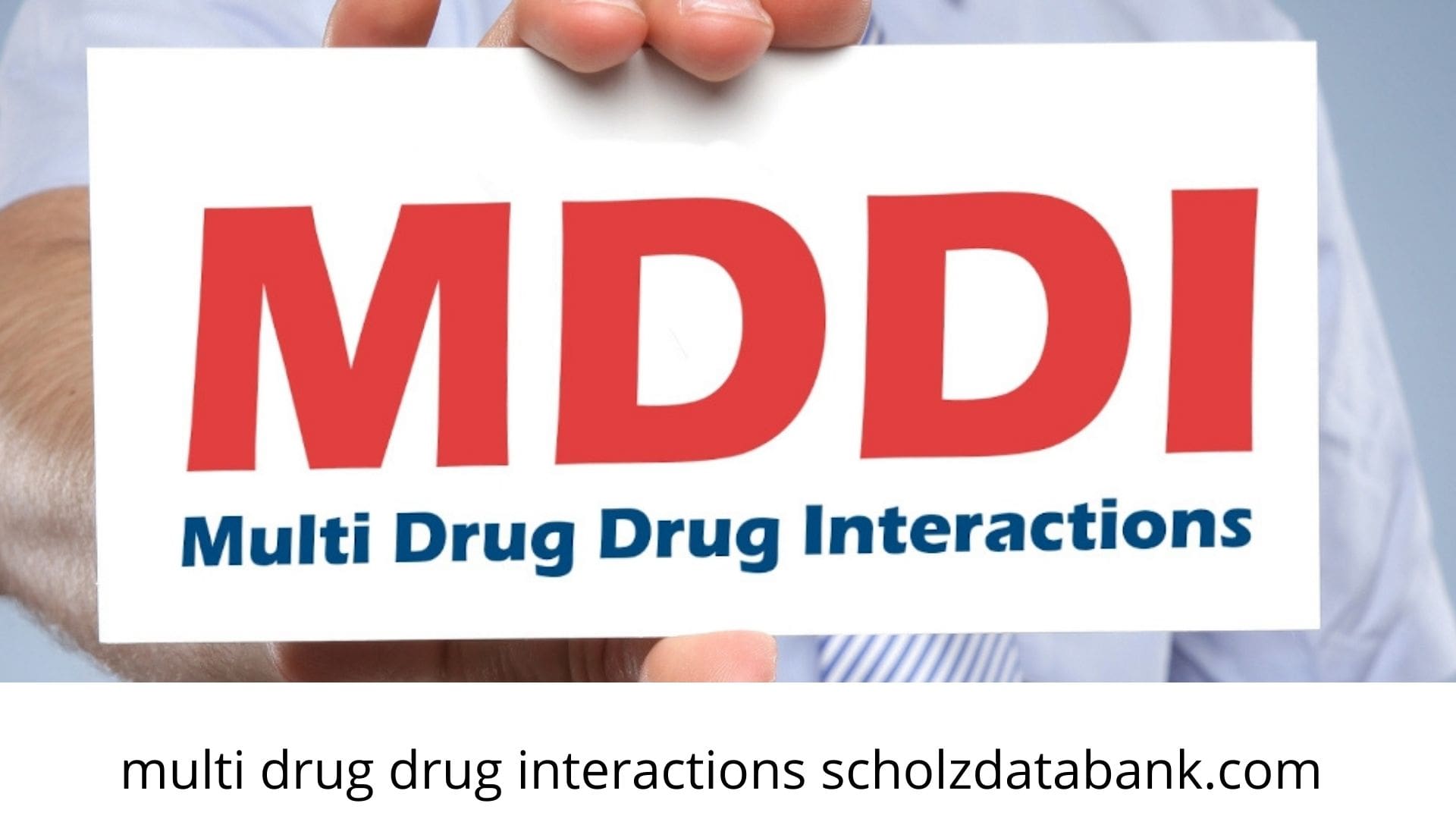Predicting changes of drug exposure due to kinetic multi drug drug interactions was a major topic included in the pharmacokinetic research published in January 2025 under the title:
"Physiologically Based Pharmacokinetic Model of CYP2D6 Associated Interaction Between Venlafaxine and Strong Inhibitor Bupropion—The Influence of Age-Relevant Changes and Inhibitory Dose to Classify Therapeutical Success and Harm"
"Physiologically Based Pharmacokinetic Model of CYP2D6 Associated Interaction Between Venlafaxine and Strong Inhibitor Bupropion—The Influence of Age-Relevant Changes and Inhibitory Dose to Classify Therapeutical Success and Harm"
by Ulrich Ruben Luecht, Wolfgang Scholz, Ann-Kathrin Geiben, Ekkehard Haen and Georg Hempel. (1)
The MDDI-Calculator of SCHOLZ Databank proved very good performance in comparison to the PBPK method with the PK-Sim® software. PBPK is the scientific standard method approved by the FDA for the prediction of pharmacokinetik drug drug interactions. An earlier contribution related to this research was already posted on this site on May 30, 2023, when the underlying thesis of Ulrich Ruben Luecht was accomplished.
Summarized: The focus was interactionwise on the drug drug interaction (DI) of venlafaxine as substrate due to enzyme inhibition through the strong inhibitors bupropion and itraconazole in the pairwise relationship as well as in the triple combination resulting in a multiple or multi drug drug interaction (MDDI). The focus was furthermore on looking at the venlafaxine interactions by comparison of two decision support software tools: On the one hand PK-Sim® and on the other hand the MDDI-Calculator of SCHOLZ Databank (SDB). PK-Sim® is a simulator software which assesses the changes of drug exposure and the AUC respectively of substrates in the so called „physiologically based pharmacokinetic model“ (PBPK) with a complex system of 18 compartments und based on comprehensive drug, physiological and patient data. PBPK-Software is acknowledged by drug approval agencies such as the FDA or the EMA as scientific standard method to assess relevant kinetic drug drug interactions. The SDB MDDI-Calculator is based on a model of scaled drug properties having an impact on the velocity determining kinetic processes of the transport, metabolism and elimination of drugs (2). Accordingly the changes of drug exposure of substrates are assessed due to the inhibition of these processes, including the impacts of multiple mechanisms and multiple or multi drug drug interactions (MDDI).
Here are the most important findings and conclusions out of the publication:
Both software systems computed practically no clinically relevant drug interaction effect for the pairwise interaction when venlafaxine is administered concomitantly with bupropion or in CYP2D6 poor metabolizers; this outcome is in accordance with the facts that venlafaxine is mainly dependent on CYP2D6 and its metabolite O-desmethylvenlafaxine (ODV) is also pharmacodynamically active. And both software systems computed an increase of the pharmacodynamically active moiety due to venlafaxine and ODV for the triple interaction when a strong CYP3A4 inhibitor such as itraconazole or ketoconazole was administered, too, with the MDDI-Calculator's assessment better than the PBPK's.
"The MDDI-Calculator demonstrated good consistency with in vivo drug exposure data in the multiple interaction scenario of VEN–BUP–ITRA."
"Overall, the MDDI-Calculator is a helpful tool that can be used to predict the effect of several inhibitors of CYP enzymes on the exposure of a substrate."
"This comparison shows that both a calculation of the change in exposure in the MDDI process using SDBs MDDIcalc and PBPK is a way to continuously improve individual pharmacotherapy."
"Both PBPK and MDDI-Calculator provide, in their own way, valuable tools to predict the DDI’s extent."
"This comparison shows that both a calculation of the change in exposure in the MDDI process using SDBs MDDIcalc and PBPK is a way to continuously improve individual pharmacotherapy."
"Both PBPK and MDDI-Calculator provide, in their own way, valuable tools to predict the DDI’s extent."
Comparing the assessment methods it is pointed out that the PBPK-PK-Sim® method requires comprehensive a priori knowledge about substrates, inhibitors, settings of the physiological compartment model, and patient data; moreover high efforts of tests and evaluations are needed. The SDB MDDI-Calculator is concerning the model settings more limited, but can be configurated in a much simpler way. Therefore, if the relevant data for bioavailability, transport, metabolism and elimination are known, the software can be adapted within a few hours to support the prediction about AUC changes of a new ingredient or due to a new ingredient, including scenarios where kinetically similar substrates or inhibitors are involved. The MDDI-Calculator takes in particular regard of how one drug in a polypharmacy medication is affected by all other drugs and their multiple interaction effects with the option to include the patient’s genetics and/or stages of kidney disease into the analysis.
The MDDI-Calculator of SDB computes its assessments of drug exposure due to drug drug interactions based on a set of about 1,000 rules how active ingredients may be affected as substrates by one or multiple inhibitors. The MDDI-Calculator is subject to an ongoing process of calibration based on the evaluation of kinetic in-vitro and in-vivo-drug-drug-interaction literature; more than 90% of the AUC assessments deviate by less than 10% from the published in-vivo-data of kinetic drug interactions. Thereby billions of polypharmacy medications with 5 or more drugs which might be prescribed by doctors can be analysed within seconds during the prescription or dispensing process. Thus the SDB MDDI- Calculator enables prescribing doctors and consulting pharmacists to detect multiple drug drug interactions in a practically infinite universe of polypharmacy and to avoid medical errors due to drugs at costs which are much lower compared to those caused by the use of PBPK software or the performance of kinetic in-vivo studies. As the SDB comes with standard U.S. american interfaces supporting CCDA formated patient data transmission according to ONC interoperability standards, OAuth 2.0, and Iframe technology any EMR-, e-prescribing- or pharmacy-software can easily connect to the SDB MDDI-Calculator. Thereby the seamless transmission of patient data and the fast analysis of medications may be provided practically to all digitalized doctors and pharmacists in the U.S. at the point of care and at affordable costs. On the other hand the SDB Calculator recommends as a tool to analyse Big Data of patient prescriptions for hidden drug interaction risks and for the implementation in AI tools to improve medications and avoid medical errors, their harm and their costs.
Wolfgang Scholz
Founder of SCHOLZ Databank
Wolfgang Scholz
Founder of SCHOLZ Databank
Literature:
1) Ulrich Ruben Luecht, Wolfgang Scholz, Ann-Kathrin Geiben, Ekkehard Haen and Georg Hempel; Pharmaceutics 2025, 17(2), 179; https://doi.org/10.3390/pharmaceutics17020179
1) Ulrich Ruben Luecht, Wolfgang Scholz, Ann-Kathrin Geiben, Ekkehard Haen and Georg Hempel; Pharmaceutics 2025, 17(2), 179; https://doi.org/10.3390/pharmaceutics17020179
2) Wolfgang U. Scholz. Zur Pharmakokinetik von Arzneimitteln bei multiplen Interaktionen; Krankenhauspharmazie 37, Nr. 11, 2016: 497-505

